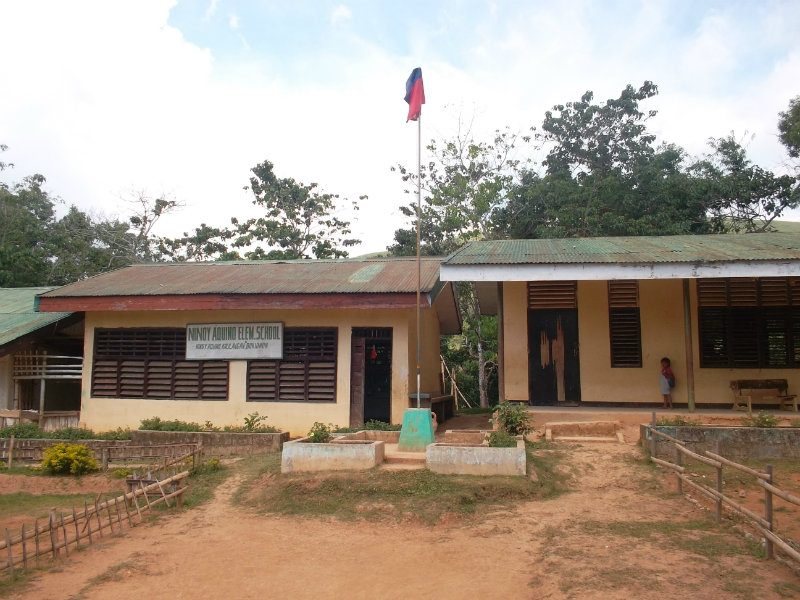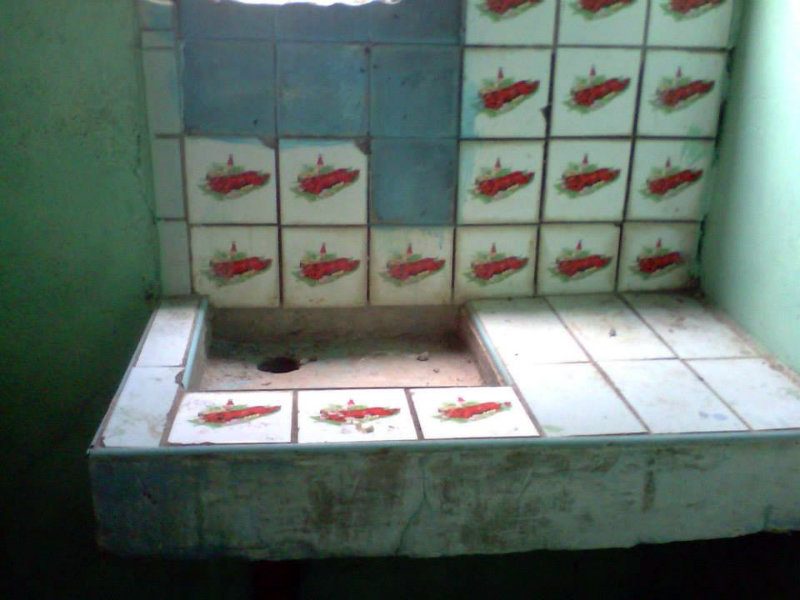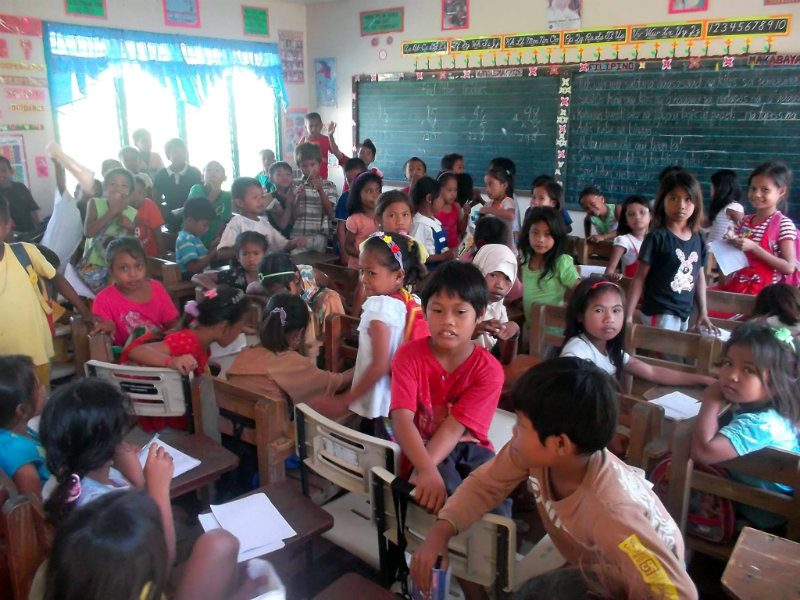SUMMARY
This is AI generated summarization, which may have errors. For context, always refer to the full article.

MANILA, Philippines – Tucked in the outskirts of Kalilangan, Bukidnon is the Ninoy Aquino Public Elementary School (NAPES), named after the father of President Benigno Aquino III.
Getting to school requires traveling on foot and riding a habal-habal (motorcycle) along the rough roads. The trip from the nearest city takes up an average of 3 hours.
With its lack of books and seats for students, the Ninoy Aquino Public Elementary School struggles to live up to its mandate to educate the next generation.

“What kind of education can you expect from them if that is the kind of classroom that they will have — no light, rest room or even potable water?” asked Kalilangan Mayor Omaradji Pizarro.
There are many schools like NAPES that often go unnoticed. But thanks to crowdsourcing initiative CheckMySchool.org, action is being taken by the local government and volunteers to improve the learning environment in NAPES.
Check My School is a program of the ANSA-EAP a non-governmental organization (NGO) aimed at connecting citizens and governments to improve education governance.
Since its launch in 2012, CheckMySchool has sought help from NGOs like Abag Kalambuan to mobilize volunteers to visit schools and gather data on the conditions of the schools. The reports are curated, analyzed, and later on presented to both the local government and local school division concerned.
“Actually, malaki ang role ng NGO kasi ito ang nagpu-push sa LGU at school division. Kung wala ang NGO, walang mag-facilitate, lalo na at alam natin ang bureaucracy sa LGU,” said Roger Palma of Abag Kalambuan. (NGOs play a big role in good governance since we push LGUs and school divisions to act on the issues raised. Without NGOs, no one will facilitate the programs for schools, considering the bureauracy in LGUs.)

Around 50 volunteers were mobilized by Abag Kalambuan in Bukidnon. These are unpaid volunteers driven by the desire to help improve the delivery of education in the country.
Public schools in PH
During the public presentation of CheckMySchool on Tuesday, November 25, program manager Jecel Censoro revealed that the primary gaps and challenges faced by many public schools include the lack of textbooks, class rooms, seats, and urinals.
This is according to the data they gathered from 248 public schools across the country. Of these schools, 165 lack seats for students while 148 don’t have toilets.
While the number of public schools only covers a fraction of the 45,000 primary and secondary public schools in the country, program manager Aldrich Telebrico said they represent a sampling of most public schools.
Monitoring
Department of Education (DepEd) Senior Administrative officer Clarisse Ligunas admitted there are gaps in the way they monitor public schools. The department focuses on quantitative data and ignores whether school resources pass standards or not.
This is the reason why DepED recently implemented the National Inventory of DepEd Public School buildings, mandating all public schools to report both the inventory and condition of their resources. The new mechanism will take effect in December 2014.

Closing the gap
Aside from tracking the problems in the public schools, CheckMySchool aims to close the loop by engaging the government to come up with clear solutions to perennial problems.
As a result, the Bukidnon LGU addressed the water supply needs in 5 out of the 27 public schools monitored in Kalilanga. An additional 5 water tanks will be installed in other schools before the end of the year. Abag Kalambuan was also able to push the LGU to allocate P2.2 million for the repair of 72 classrooms in Kalilanga.
According to Censoro, the case of NAPES shows that a lot of local delivery issues can be addressed if only the community works together through the Local School Boards (LSB) and if the special education fund of each LGU is properly utilized.
Rough road?
Like the rough road leading to the Ninoy Aquino Public Elementary School in Kalilanga, the trail toward a better public education system is littered with obstacles and challenges.
But education advocates present in the forum were optimistic.
With the combined efforts of and support from civil society, local and national government, and the public, the advocates look forward to the day when all public students will finally have their own books and safe classrooms conducive to learning.
After all, as DepEd Secretary Armin Luistro is fond of saying, “Education is not just the business of the Department of Education; it is the business of everyone.” – Rappler.com
Add a comment
How does this make you feel?
There are no comments yet. Add your comment to start the conversation.